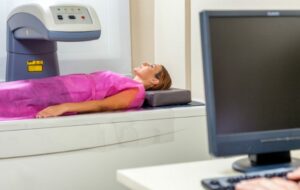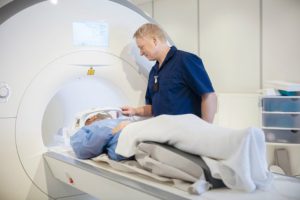Learning More about Bone Densitometry
So you’re wanting to learn more about a bone densitometry test. What is it? Who should have the scan? What does the test diagnose?

Learning More about Bone Densitometry

So you’re wanting to learn more about a bone densitometry test. What is it? Who should have the scan? What does the test diagnose?
Bone densitometry scans are more commonly referred to as bone density tests. These tests scan the body to check how dense the patient’s bones are. Denser bones mean stronger, healthier bones. Bones with a lower density may indicate sign of deterioration or potential osteoporosis. Bones that register as having a lower density are more fragile, thus more easily broken in the unfortunate event of an accident.
Not everyone needs a bone densitometry scan—but your doctor may recommend one if you are over the age of 50. Other possible reasons for having a bone density scan would be those with a family history of bone problems or with risk factors for problems. Risk factors for bone density issues may include things such as early menopause, Rheumatoid arthritis, or certain thyroid conditions. You should always speak with a physician if you have any concerns about potential risk factors.
The bone densitometry scan is a very simple procedure which is completely painless. It takes only about 15-30 minutes to complete. The patient lies flat on the table, fully clothed, while the machine passes over the body and performs the scan. At Vision XRAY, we utilise a technology known as DEXA, or Dual Energy X-ray Absorptiometry. This scan uses xrays to produce images of your bones. The procedure is completely safe and is a low-radiation machine. During this scan, you may be asked to shift positions, always lying down. The bone density scan checks areas with strong indications of bone density loss, such as the hips and lower back, and can also be used to observe other specific areas, according to the need. These areas are helpful when observing changes in bone density, as differences and signs of loss are most apparent in these bone regions.
DEXA tests are an excellent indicator of osteoporosis, and indeed, bone density scans are one of the only ways to fully diagnose the condition. If your scan results show bone density loss, your physician will speak with you about ways to prevent further bone deterioration. There are many things you can do to help control osteoporosis and maintain bone strength, including exercise, hormone therapies, Calcium supplements. You and your doctor can help decide together what is right for you.
Read our articles and FAQs
We’re delighted to provide updates on the latest medical imaging technology and answer your most frequently asked questions about our services.









